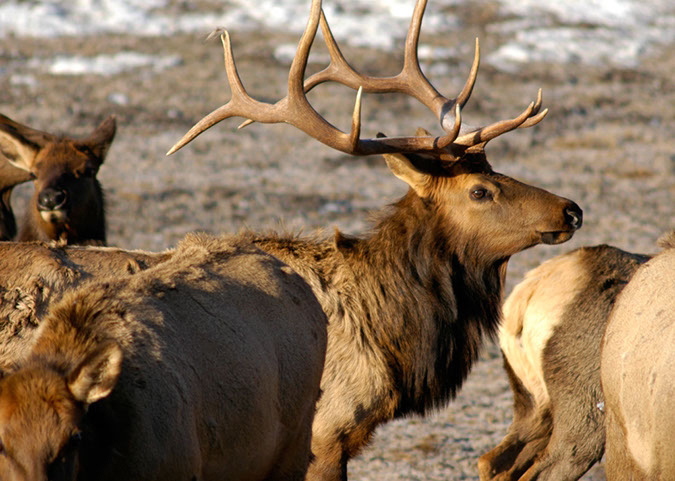BAKER CITY, Ore. — The elk aren’t hungry enough yet to need, or indeed to be interested in, Eddie Miguez’s handouts. But he’ll be ready when they are.
Miguez manages the Oregon Department of Fish and Wildlife’s Elkhorn Wildlife Area. The area consists of 10 sites where Miguez and his crew set out alfalfa hay and food pellets for thousands of elk and deer each winter.
The sites are all along the eastern base of the Elkhorns.
ODFW created the Elkhorn Wildlife Area in 1971, but not for the reason that might seem obvious.
The purpose isn’t to make sure elk and deer have enough to eat during the long, and frequently severe, Eastern Oregon winter.
It has to do, rather, with what they eat.
And what they used to eat, in many cases, was hay that local farmers put up to nourish their cattle through the winter.
The concept of the Wildlife Area is simple: If you put alfalfa in the animals’ paths from the mountains to the haystacks, and then make sure the supply is replenished, then they won’t bother munching the food that’s meant for cattle.
By and large the strategy has worked.
Elk and deer still get into haystacks, as well as alfalfa fields, each year.
But the proof of the plan’s efficacy is obvious at each of the 10 sites, where animals gather, rather like pets, every day when the Wildlife Area crew shows up with bales of alfalfa.
The key, though, is to make sure the hay gets there before the elk do, Miguez said.
“Once they get down into the valley it’s kind of hard to get ’em back up,” he said.
Miguez said his crew spread hay at all the feed sites on Monday, even though elk and deer haven’t arrived yet.
But Miguez has more than a passing interest in weather forecasts, and when he saw that snow was predicted, followed by several days of sub-freezing temperatures, he knew the animals would likely start descending toward the valleys.
“Their energy requirements will be going way up, just to maintain body heat,” he said.
Some years the elk would have arrived already, but this has been an atypical autumn, Miguez said. Most notably, a soggy stretch in September followed by mild temperatures in October reinvigorated grasses and shrubs desiccated by the drought that persisted during the spring and most of the summer.
With so much nutritious food available in the mountains, Miguez said, the elk and deer have no reason to look elsewhere for meals.
There have been relatively few problems this fall with elk damaging hay fields and pastures, a common problem in dry years when grasses shrivel by late summer and early fall, he said.
“If they can get good quality natural forage, that’s what they’re going to be on rather than at these feed sites,” Miguez said.
This week’s frigid weather likely will change the situation dramatically, though, as snow covers the grass and frost makes other forage less palatable, he said.
Besides protecting farmers’ and ranchers’ hay supplies, the Elkhorn Wildlife Area gives residents a rare chance to watch dozens, and in some cases hundreds, of wild animals acting rather like animals do in zoos.
Two of the 10 feed sites are well-suited for sightseeing, with good vantage points from public roads:
• Auburn is on the south side of Old Auburn Road, which branches off Highway 7 about six miles south of Baker City.
• Anthony Creek is near the Wildlife Area headquarters on Powder River Lane eight miles west of North Powder.
The feed sites themselves are closed to the public, however, through April 10 to avoid harassing the animals.
One difference this winter is that Alice Trindle and Susan Triplett, for the first time in two decades, won’t be leading horse-drawn wagon rides to the meadow at Anthony Creek where a large herd of elk reliably gathers.



